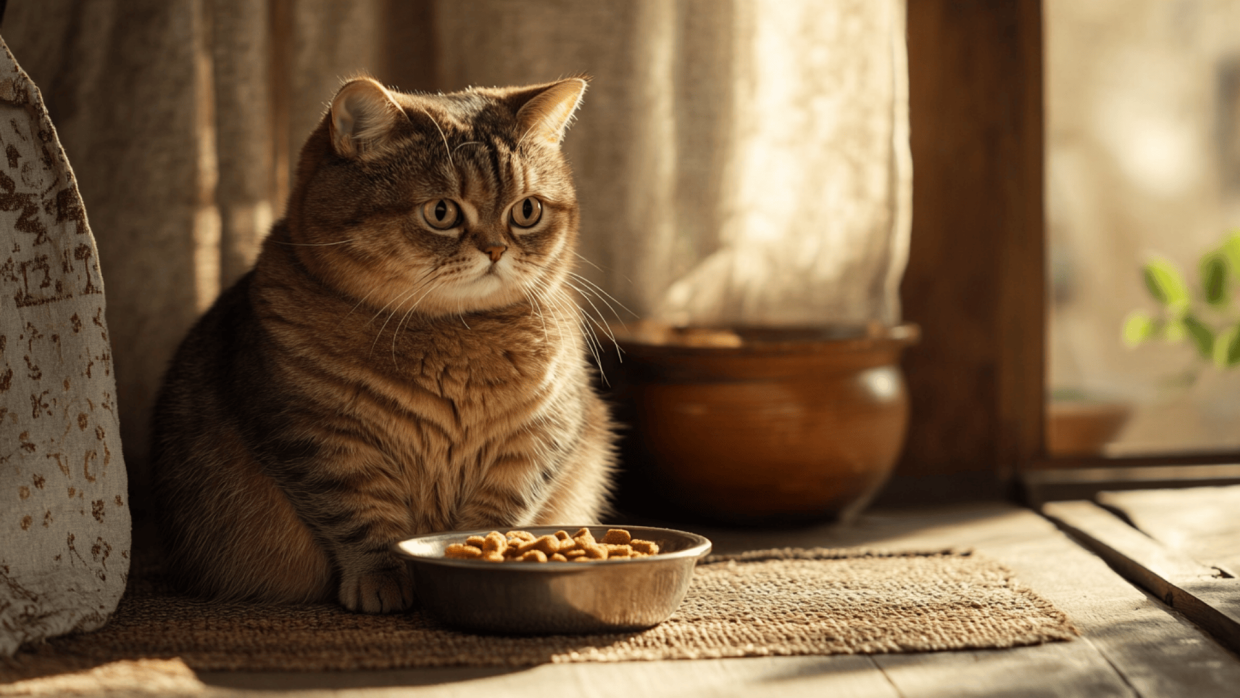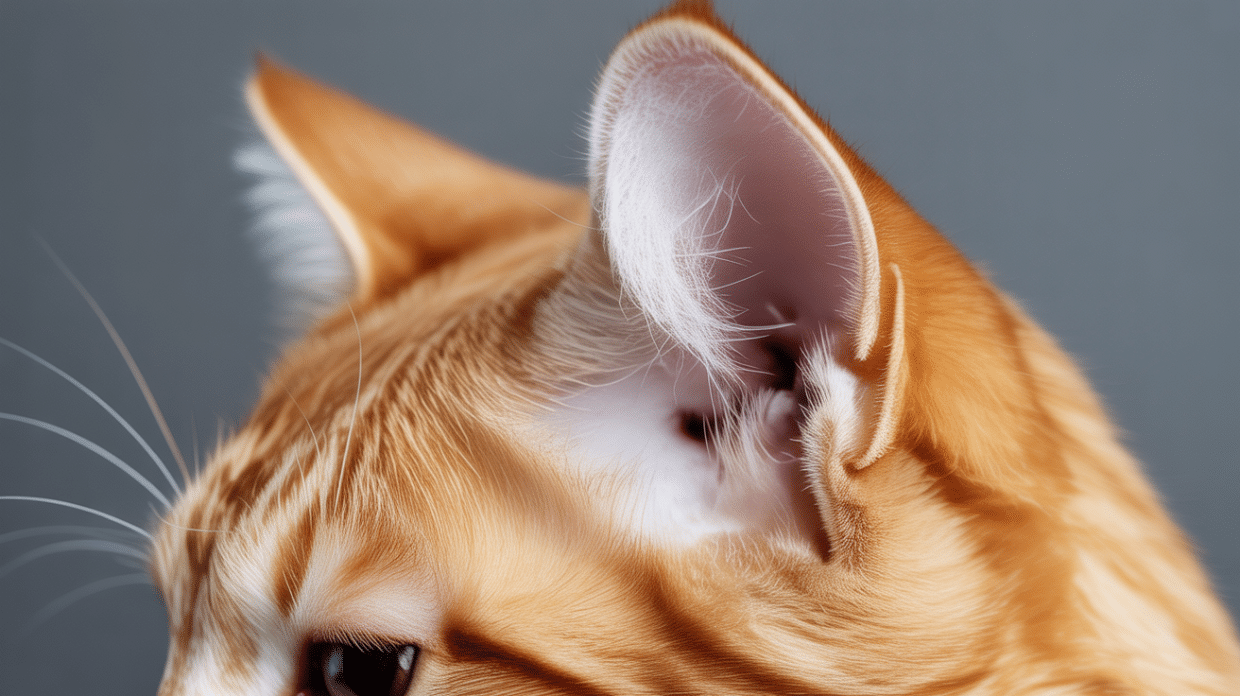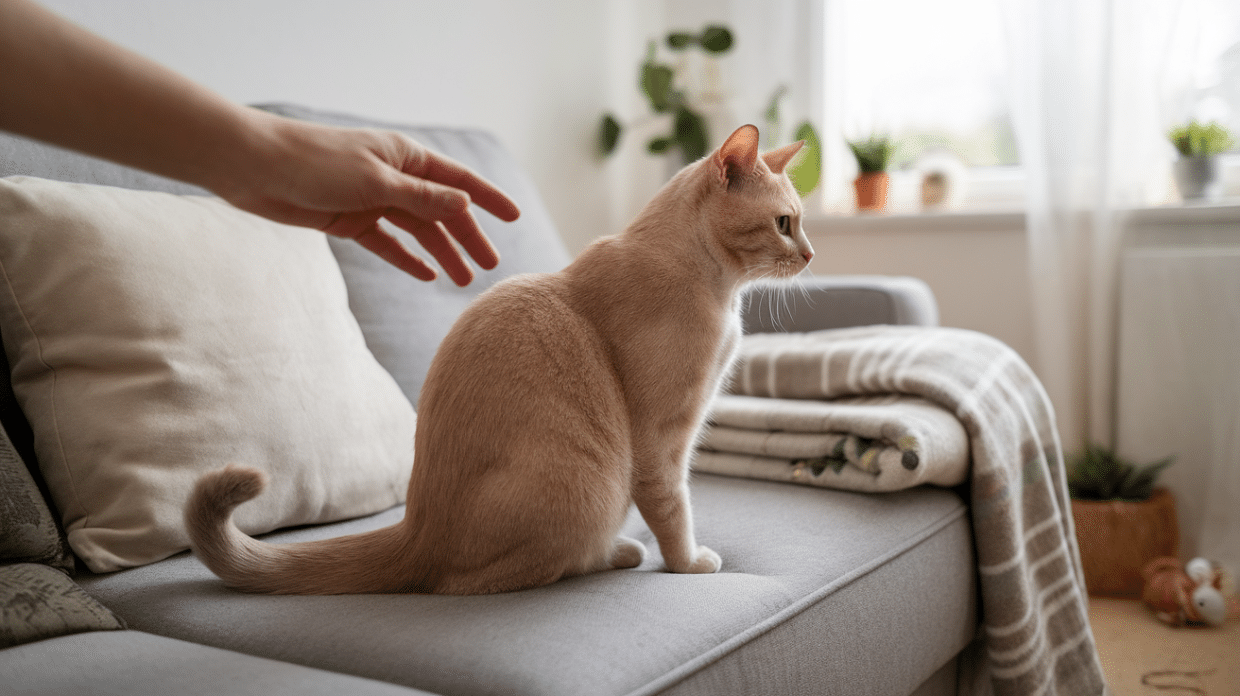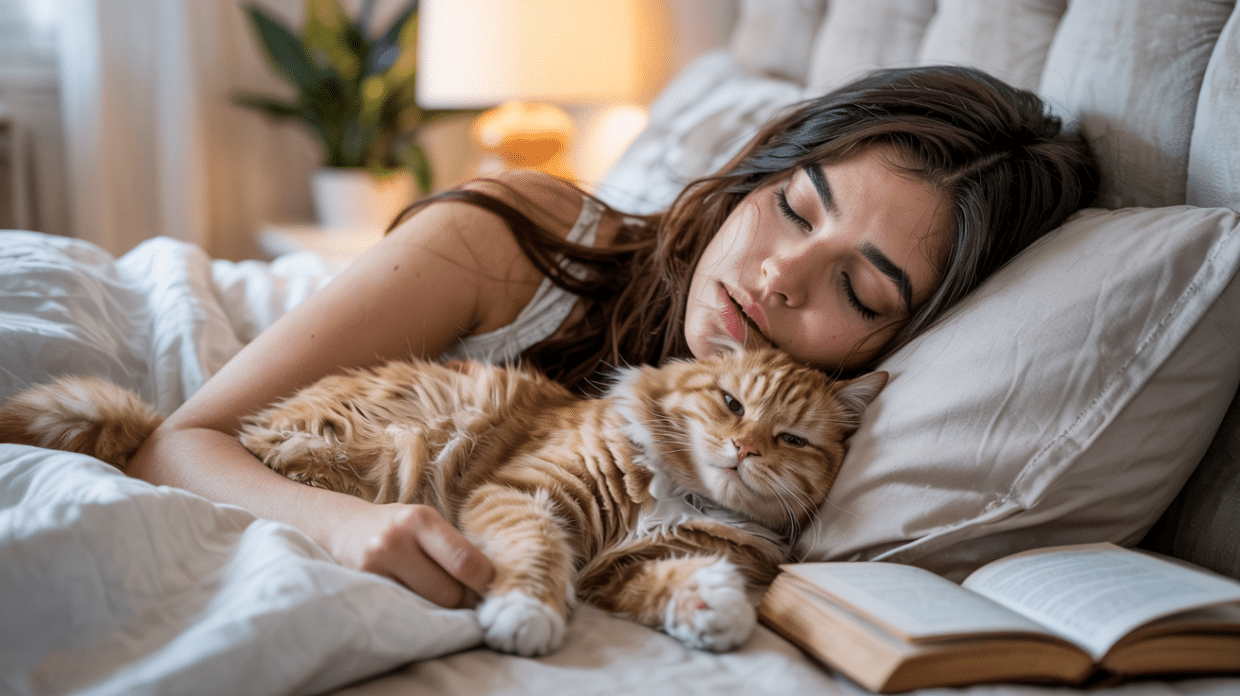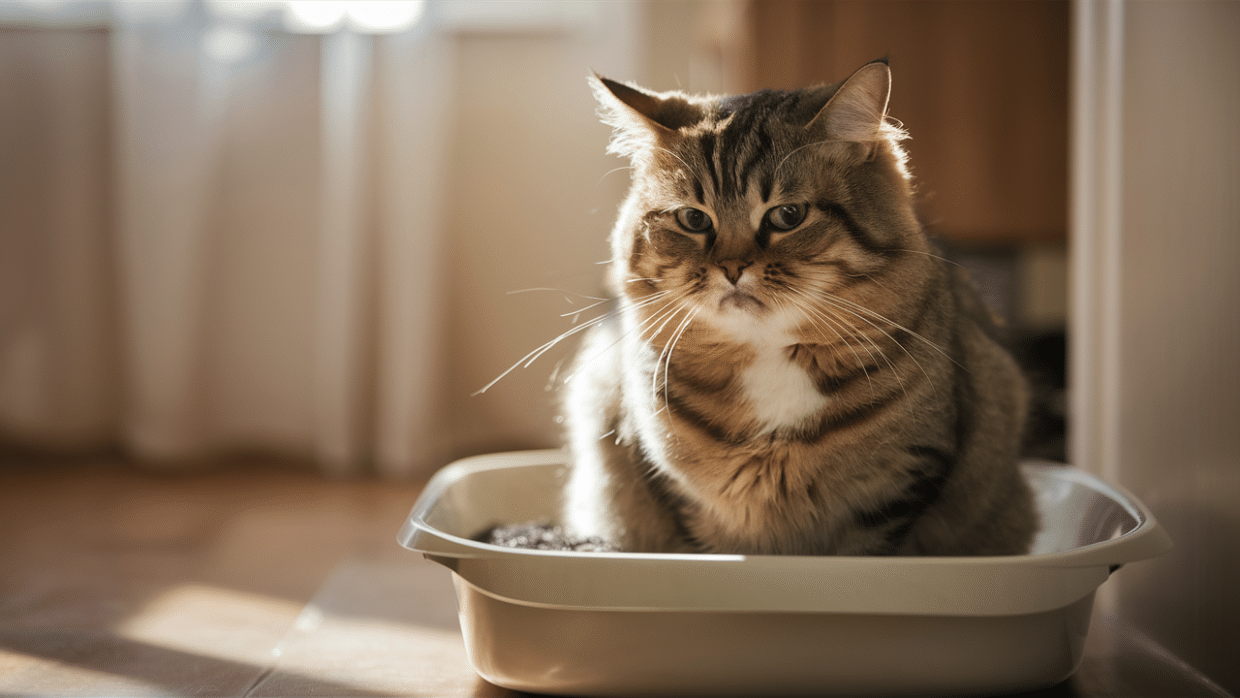Ever look at your furry friend and wonder, “Why is my cat so fat?”
It’s a common worry, especially when your cat seems healthy otherwise. Seeing your cat gain extra pounds can be confusing and concerning.
In this blog, you’ll discover simple reasons cats get overweight, practical ways to slim them down, and easy tips to keep them healthy.
By the end, you’ll know exactly how to help your cat manage its weight and feel good again.
Curious if there’s one surprising thing making your cat gain weight that you might have overlooked? Keep reading to find out!
Is Your Cat Really Fat? (Self-Assessment Guide)
Not sure if your cat is truly overweight? Here’s how to quickly check at home.
Visual Signs of Obesity vs. Normal Weight
A fat cat typically looks round when viewed from above. You won’t see a clear waistline. A healthy-weight cat has a visible waist and a slimmer tummy area.
Easy Steps to Perform a Body Condition Score at Home
- Feel the ribs: Gently press on your cat’s sides. If you can’t easily feel ribs, your cat may be overweight.
- Check from above: Look down at your cat. If there’s no waistline, your cat might be carrying extra weight.
- Side view check: From the side, a cat’s belly shouldn’t sag heavily towards the ground.
Difference Between a Fat Cat and a Primordial Pouch
A primordial pouch is the loose, floppy skin many cats have under their belly.
Unlike fat, this pouch swings lightly and doesn’t feel thick or filled.
Quick Checklist to Evaluate Your Cat’s Condition
- Ribs easily felt without pressing hard?
- Waist visible from above?
- Belly tucked slightly upward from the side view?
- Does your cat move comfortably?
Use this checklist often to keep an eye on your cat’s weight.
Main Reasons Cats Become Overweight
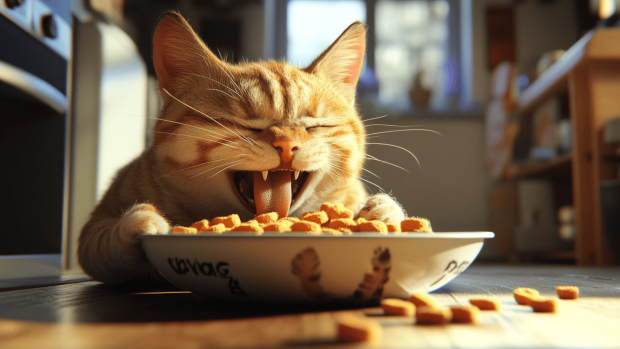
Here are the most common diet mistakes that make cats gain weight and what you can do instead.
1. Overfeeding and Diet Mistakes
Cats need less food than you might think. Always follow package guidelines and adjust based on your cat’s activity level and age.
Free Feeding vs. Scheduled Feeding
- Free feeding: Leaving food out all day makes overeating easy.
- Scheduled feeding: Offering measured meals at set times helps control intake and prevent weight gain.
Risks of Excessive Treats
Treats add extra calories quickly. Limit treats to less than 10% of your cat’s daily calories to avoid accidental weight gain.
Importance of Quality Diet (Wet vs. Dry Food Debate)
Wet food usually has fewer calories and helps your cat feel full longer. Dry food is convenient but higher in calories, so portion carefully or mix both types.
2. Sedentary Lifestyle and Lack of Exercise
Indoor cats often gain weight because they don’t have enough opportunities to stay active. Here’s how it happens and why it matters.
Why Indoor Cats Gain Weight Easily
Indoor cats have limited space and fewer reasons to run, jump, or play. They spend more time sleeping and lounging, burning fewer calories, which leads to gradual weight gain.
Without regular activity, indoor cats are especially prone to obesity.
How Inactivity Affects Your Cat’s Health
Not moving enough doesn’t just lead to extra pounds. It can cause serious issues, like:
- Weak muscles and stiff joints
- Increased risk of diabetes and heart problems
- Reduced energy, making them even less likely to play
Encouraging daily playtime keeps your cat fit, healthy, and mentally stimulated.
3. Aging and Metabolism Changes
Just like people, cats’ bodies change as they age. Adjusting their diet and lifestyle can make all the difference.
How a Cat’s Metabolism Changes With Age
As your cat ages, their body naturally slows down. They use less energy each day, even if their activity levels stay the same.
Older cats also lose muscle mass, meaning they need fewer calories and different nutrients to keep healthy without gaining extra weight.
Feeding Senior Cats Correctly
Older cats benefit from special senior diets designed for their changing nutritional needs. Follow these simple steps:
- Choose senior cat food, which is lower in calories but rich in protein.
- Feed slightly smaller meals more frequently to prevent hunger.
- Schedule regular vet checkups to make sure their weight stays healthy.
Adding these practical tips provides a clear action plan, giving readers more value and helping them manage their cat’s weight effectively.
4. Spaying and Neutering: Myths vs. Facts
Many cat owners worry that spaying or neutering will automatically make their pets fat. Here’s what’s really happening.
Real Impact of Spaying/Neutering on Metabolism and Appetite
Spaying or neutering slightly slows your cat’s metabolism, meaning they burn calories a bit more slowly.
These procedures can also increase your cat’s appetite, causing them to eat more than usual if food isn’t controlled.
Practical Tips for Managing Weight After the Procedure
- Adjust portion sizes slightly downward after surgery to prevent weight gain.
- Offer structured mealtimes instead of leaving food out all day.
- Increase daily playtime or exercise to keep their metabolism healthy.
5. Medical Conditions Leading to Weight Gain
Sometimes, health issues—not diet or activity—cause your cat to gain weight unexpectedly. Here’s how to tell and what to look for.
Signs Your Cat’s Weight Gain Could Be Medical
Look out for these red flags:
- Sudden or quick weight gain without more food.
- Swollen belly or overall bloating.
- Less energy, moving slowly, or sleeping more than usual.
- Changes in appetite or drinking habits.
Common Conditions Explained Simply
- Thyroid Issues (Hypothyroidism): Low thyroid hormone levels slow down your cat’s body, causing weight gain even with normal eating.
- Arthritis: Painful joints make your cat less active, burn fewer calories, and gain extra weight.
- Fluid Retention: Heart, kidney, or liver issues can cause fluid buildup, making your cat appear heavier and bloated.
If you see these signs, schedule a vet visit to pinpoint the exact cause and get your cat healthy again.
Health Risks of Cat Obesity (Why You Should Care)
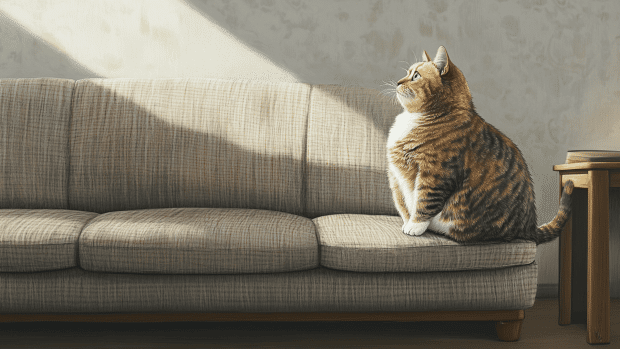
Being overweight isn’t just uncomfortable for your cat—it can also seriously harm their health. Here are the key risks to know about.
Joint pain and mobility issues: Extra weight puts pressure on your cat’s joints, causing pain, stiffness, and trouble moving. Over time, this makes it harder for your cat to walk, jump, or even play comfortably.
Diabetes and chronic inflammation: Fat cats have a higher risk of developing diabetes, which affects blood sugar control. Obesity also leads to chronic inflammation, causing long-term damage to organs and tissues.
Reduced lifespan and quality of life: Cats that stay overweight often live shorter lives due to health problems. They may also lose interest in daily activities, becoming unhappy and less playful.
Keeping your cat at a healthy weight helps them enjoy a longer, happier life with fewer health issues.
Practical Ways to Help Your Cat Lose Weight
Helping your cat lose weight doesn’t have to be complicated. Simple changes to diet, activity, and routines make a big difference.
1. Diet and Nutrition
Start by switching gradually to weight-management cat food over about a week. Choose wet food or specially formulated diets labeled “weight control.”
Limit treats and measure portions carefully. Using measuring cups or automated feeders makes portion control easy and accurate.
2. Encouraging Your Cat to Exercise
Get your cat moving by offering fun toys like feather wands, laser pointers, or puzzle feeders.
Create an engaging space with climbing trees, shelves, and scratching posts. Daily short play sessions can quickly boost activity.
If your cat seems interested, consider leash-walking safely using a comfortable harness.
3. Behavioral and Psychological Factors
Cats may overeat due to boredom or stress. Prevent boredom by regularly rotating toys and scheduling daily playtime.
Reduce stress by identifying triggers—like new pets or noise—and providing quiet, calm spaces.
Consider calming products, like pheromone diffusers, to help ease anxiety and emotional eating.
When to See Your Veterinarian
Sometimes managing your cat’s weight needs professional help. Watch out for sudden weight gain, swelling, extreme tiredness, or big changes in appetite. These are red flags indicating a vet visit is necessary.
At the vet, expect a thorough check-up, including weight measurement, a body condition assessment, and possibly blood tests. Your vet will ask about diet, activity, and behavior.
Depending on results, treatments might include prescription foods, medication, or further tests to identify underlying health issues. Regular follow-ups keep your cat healthy.
Seek immediate veterinary attention if your cat has:
- Sudden trouble breathing
- Severe swelling or bloating
- Vomiting or diarrhea lasting over 24 hours
- Refusing to eat or drink for more than one day
Conclusion
Now you know the answer to your question, “Why is my cat so fat?” You’ve learned common causes like overeating, inactivity, and health issues.
Start by checking your cat’s diet, encourage daily exercise, and visit the vet if needed. You’re equipped to help your cat shed those extra pounds confidently.
Quick tip: Measure your cat’s food daily instead of free-feeding to prevent accidental overeating.
Want to learn more about keeping your cat happy and healthy? Check out our other helpful blogs for more easy pet care advice.

